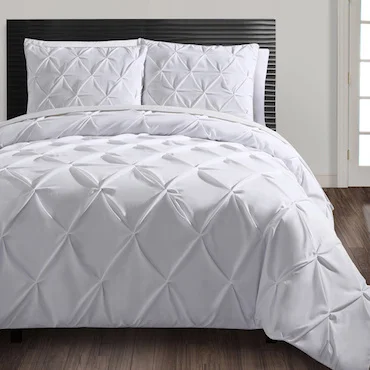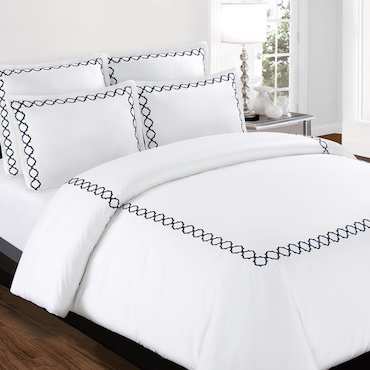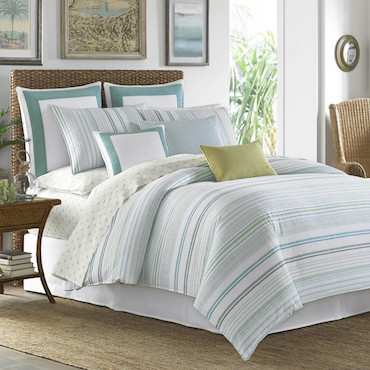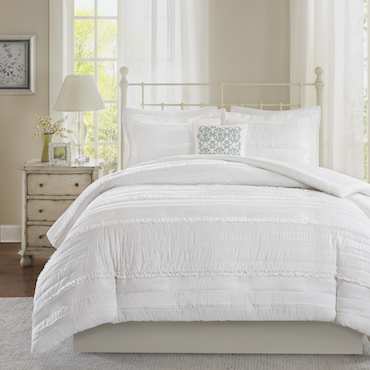Duvets are responsible for more than just keeping you warm and cozy during the cold winter months. These plush down comforters pull together various elements of your bedroom decor to create an inviting ambiance that helps inspire sweet dreams. When shopping for a duvet, there are several factors to consider that can enhance your chances of making the right selection. From thread count to construction, this down bedding must suit your comfort level and satisfy your preferred quality standards.
Shell Material and Thread Count
Duvets feature distinct styles, colors, and patterns. However, many duvets feature a common shell material, which is typically cotton. This fabric is easy to maintain, provides impressive comfort, and falls into a relatively low price range. Other shell materials include cotton blends, silk, and silk blends.
The ticking, also known as the shell material, of the duvet requires a high thread count to ensure the fill material stays inside the shell. Cotton duvets with a thread count of 300 and above offer durable ticking, which prevents ultra-fine fill materials from pushing through the fabric and ruining the comforter. For instance, designer duvets typically feature 100-percent Egyptian cotton ticking, as this type of fabric is extremely durable and breathable.
Types of Fill Material
The fill material gives the duvet a lighter and fluffier feel. Better fill material does not mean more warmth, but it typically means more comfort. Duvets feature either natural or synthetic fill materials. For example, a white goose down duvet is filled with natural filaments from geese. Synthetic fill materials are less expensive and are usually designed to accommodate people with allergies. However, this material is not as breathable as natural fill materials. The most commonly used natural fill materials include down, feathers, and wool.
When considering fill material, it is important to identify fill-power. Duvets that contain higher fill-power down are lighter and fluffier. An average duvet features up to 600 fill-power down, while luxury duvets feature up to 900 fill-power down.
Tog Rating and Warmth
The warmth the duvet provides depends on the tog rating. The higher the tog rating, the better the duvet traps heat. As a general rule of thumb, a 4 tog duvet is ideal for summer, a 9 tog works for spring or fall, and a 13 tog duvet is perfect for winter.
Although weight should not be confused with warmth, duvets with higher fill weights tend to provide impressive warmth. For warmer environments, a heavier fill weight may offer more comfort. Conversely, in cooler environments, a lighter fill weight could be more comfortable.
Size
Duvets come in twin, double or full, queen, and king sizes. The absence of a bed skirt may require purchasing a duvet one size larger than the size of the mattress to conceal the sides of the bed. Additionally, to combat fighting over the duvet in the middle of the night, buying a duvet one size bigger than the mattress works well.
Duvet Covers
Duvet covers protect the duvet fabric from damage caused by stains, spills, grime, and general wear and tear. For instance, a king-size duvet cover keeps the duvet inside clean while adding a decorative touch to the bed. The duvet cover holds the duvet in place with zippers, ties, or buttons. These covers complement sheets and pillowcases for a coordinated look. Some manufacturers require a duvet cover as part of the warranty.


























